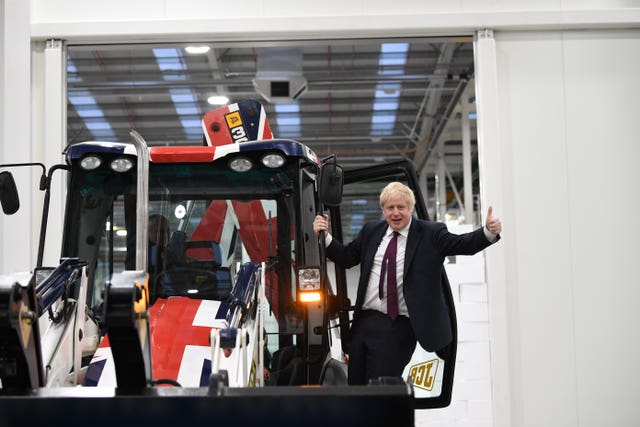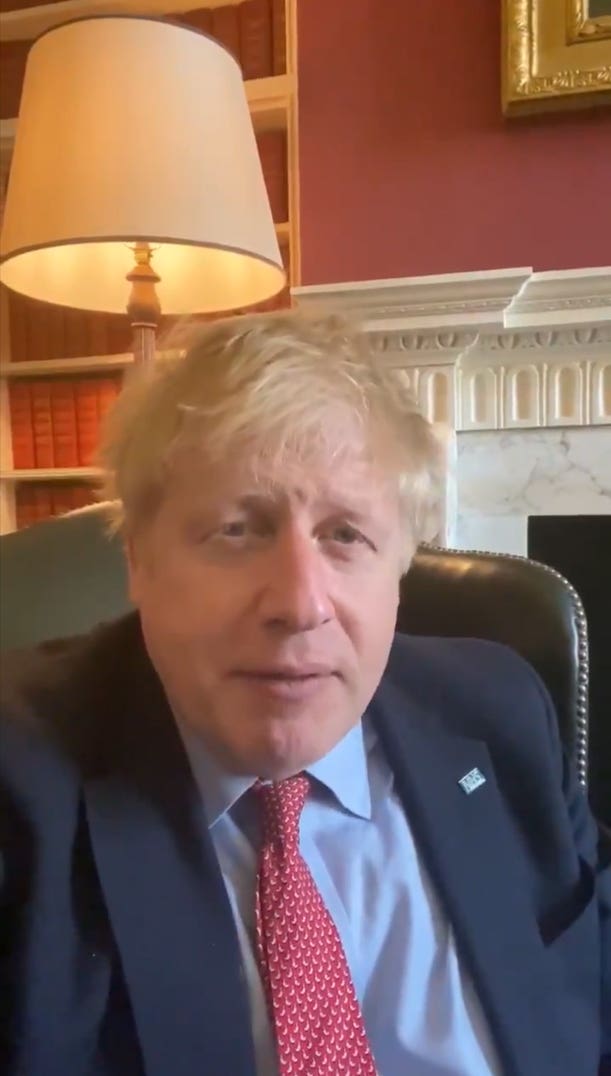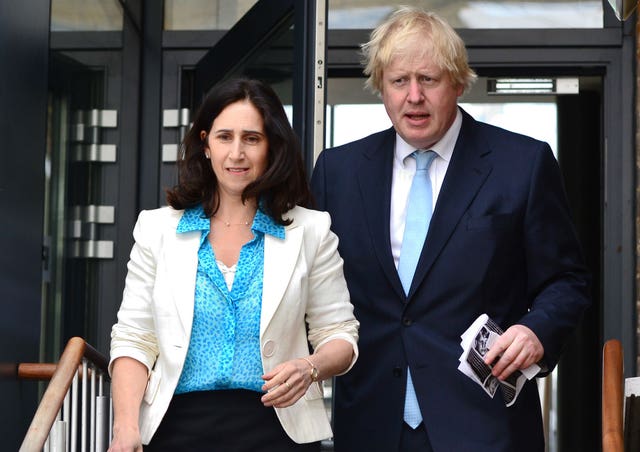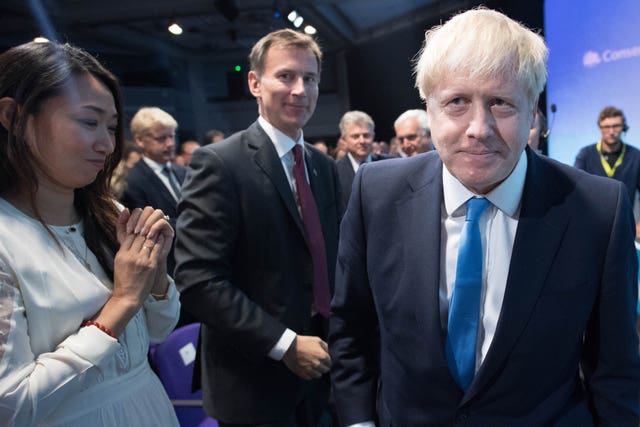
Boris Johnson has had a year like no other, personally and politically, and to finish it off he appears to have agreed a deal that at times appeared impossible.
Securing a UK-EU trade deal at the 11th hour will help set the course for the rest of his days in Downing Street, reducing ties with Brussels without being totally adrift, to chart a new course in choppy waters.
A year ago, his Conservative Party made strides into Labour heartlands on his pledge to “get Brexit done”.

This set the tone for talks with Brussels this year. A renewed mandate meant Number 10 said it was not going to back down on its tough negotiating stance.
The 11-month negotiating window was always tight but seemed almost insurmountable when Covid-19 came along and grew into a crisis unmatched during peacetime.
Then on March 27, Mr Johnson tested positive for Covid-19. Two days later, it was announced his fiancee Carrie Symonds had given birth to a baby boy.
A week later on April 6, Mr Johnson was admitted to St Thomas’ Hospital in London and a day later he was taken to intensive care.
Foreign Secretary Dominic Raab, who was called in to deputise for the Prime Minister when he was incapacitated, later remarked that it was “touch and go” whether Mr Johnson would pull through.

But recover he did, and Mr Johnson said he was determined to tackle the virus in the coming months.
In 2020, he has brushed off a number of U-turns and the resignation of his controversial chief adviser Dominic Cummings.
But Mr Johnson entered Number 10 despite a string of gaffes and scandals that would have ended the careers of other politicians.
Instead, Mr Johnson has been able to survive and prosper despite – or possibly because of – his capacity for attracting attention.
A row with Ms Symonds that saw police called to their home in the early stages of the Conservative leadership race was a glimpse into the complicated private life about which Mr Johnson tries desperately to avoid answering questions.

But it was his public actions, whether writing provocative columns or his record in the Foreign Office, that led to most scrutiny as Tory party members decided on the next prime minister.
He has been repeatedly criticised for using racially charged or offensive language, including describing the Queen being greeted in Commonwealth countries by “flag-waving piccaninnies” and then-prime minister Tony Blair being met by “tribal warriors” with “watermelon smiles” on a trip to the Congo.
In a 2018 Daily Telegraph column, he described veiled Muslim women as “looking like letter boxes”.
Mr Johnson has also faced repeated questions about his blunder as foreign secretary in the case of jailed British-Iranian Nazanin Zaghari-Ratcliffe, who he mistakenly said had been training journalists – comments which were seized on by the authorities in Tehran.
He has insisted his comments made no difference, something disputed by Mrs Zaghari-Ratcliffe’s husband Richard Ratcliffe, and said the blame for her continued incarceration should be on the Iranian regime rather than him.
While he has been all too willing to attract publicity for his political advantage, Mr Johnson, 55, has been reticent when it comes to details of his private life.
He met his first wife, Allegra Mostyn-Owen, while they were students at Oxford, and they wed in 1987 but the marriage was annulled in 1993.

His second marriage, to Marina Wheeler, ended after 25 years, during which they had four children.
The marriage was turbulent. In 2004 he was sacked from the Tory front bench over a reported affair with journalist Petronella Wyatt, and the Appeal Court ruled in 2013 that the public had a right to know that he had fathered a daughter during an adulterous liaison while mayor of London in 2009.
Claims that Mr Johnson squeezed the thigh of journalist Charlotte Edwardes, at a private lunch at The Spectator magazine’s HQ shortly after he became editor in 1999, overshadowed his first Conservative Party conference as PM.
Allegations about his relationship with American entrepreneur Jennifer Arcuri, and whether she enjoyed preferential treatment while he was mayor, also dominated the headlines in September.
Mr Johnson’s latest relationship, with 31-year-old Ms Symonds, has been the subject of intense intrigue.
But his status as a favourite of the Conservative grassroots was confirmed in the leadership election, which saw him trounce rival Jeremy Hunt.

He secured the votes of more than half of Tory MPs to make it through the parliamentary stage of the contest, including some pro-EU Conservatives who hoped he could unite the party.
Mr Johnson’s ability to reach out to voters who traditionally shun the Conservatives was demonstrated by his election as mayor of London in 2008, and retention of the powerful position four years later.
The Tory MP’s decision to back Brexit in the referendum was a significant boost for the campaign, giving Vote Leave the high-profile frontman it needed.
After taking office as prime minister, Theresa May made him her foreign secretary – although he resigned in July 2018 over the direction she was taking on Brexit.
An old Etonian, Mr Johnson was a member of the notorious elite dining society the Bullingdon Club at Oxford.

Although he has had his sights set on Number 10 throughout his political career, as a child he held even loftier ambitions. According to his sister Rachel, the young Boris’s goal was to be “world king”.
Before he called the election his tenure did not run smoothly.
His attempt to prorogue Parliament backfired spectacularly when the Supreme Court ruled it was unlawful.
And he failed to deliver on his “do or die” commitment to take Britain out of the European Union on October 31, despite securing a new Brexit deal with Brussels, which many thought was impossible.
MPs rejected his timetable to force the Withdrawal Agreement Bill through Parliament, prompting Mr Johnson to push on for a general election, a bid that was eventually granted when opposition parties deemed that a no-deal Brexit was no longer on the table.
Once he called the election, the campaign was not without its bumps.
He was accused of not submitting himself to scrutiny, being replaced in a debate on climate change by a melting ice sculpture after he refused to turn up, and was called out by broadcaster Andrew Neil for failing to agree to an interview.
In the final days of the campaign, there was a storm over his refusal to look at a photograph of a four-year-old boy who had to sleep on a hospital floor, instead pocketing the phone of a journalist who tried to show him the image.


Comments: Our rules
We want our comments to be a lively and valuable part of our community - a place where readers can debate and engage with the most important local issues. The ability to comment on our stories is a privilege, not a right, however, and that privilege may be withdrawn if it is abused or misused.
Please report any comments that break our rules.
Read the rules hereLast Updated:
Report this comment Cancel